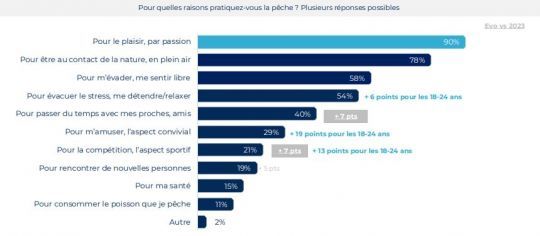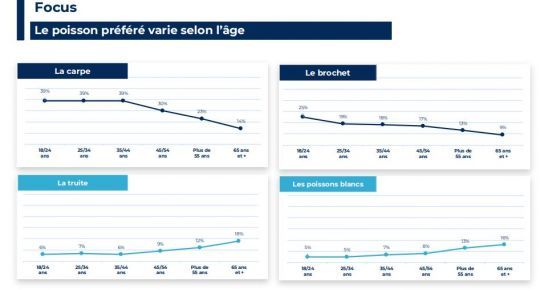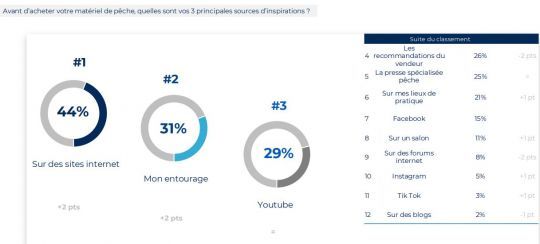This study outlines the changes in practice between now and 2023. For this study, a sample of 6,504 French people over the age of 18 was interviewed. This sample was drawn from the customer databases of GIFAP professionals: it is therefore not representative of all anglers in France, and includes committed anglers who fish on an extremely regular basis.

Fishing habits
3% of anglers have only been fishing for 2 years or less, 12% are regulars who have been fishing for 2 to 10 years, and 85% have been fishing for more than 10 years.

90% of those surveyed fish for passion and pleasure, 78% for contact with nature, 21% for sport, and only 11% to eat the fish they catch.
56% say they fish at least once a week, and just 8% only a few times a year.

Carp, with 28%, is the preferred fish of the sample, followed by pike with 16% and trout with 10%. Bass or wolffish ranks fifth and remains the leading sea fish, with 9% of anglers specifically looking for it.
Carnivore fishing is the most widespread sport, with 59% of anglers, although this is down 6 points on the 2023 survey. In second place, fishing with jigs, feeder, English or carp jigs increases by 2 points to 48%. This is followed by battery carp fishing (36%) and trout fishing (35%). Sea fishing concerns 31% of anglers surveyed.
Fishermen's consumption patterns
The average annual amount spent by anglers on fishing is ?934 (excluding fishing licence, travel and accommodation). This figure is ?113 higher than in 2023.
Before buying their equipment, 44% of anglers turn to websites for inspiration, followed by friends and family at 31%, and only 29% take advice from You Tube. The specialized paper press only comes fifth at 25%, just behind recommendations from a salesperson at 26%.

The criteria for choosing fishing tackle are defined as follows:
- Efficiency 62
- Solidity: product durability 61
- Price: 60% promotion
- Product brand 46
- ...
These purchases are made by 66% of anglers in physical stores and on websites. Only 30% of anglers only buy in-store. Simplicity remains the most important factor in purchasing, followed by the range of choices on offer, and finally the fact of seeing the products before buying them. Unsurprisingly, consumers hope for more discounts or promotions when making their purchases.









